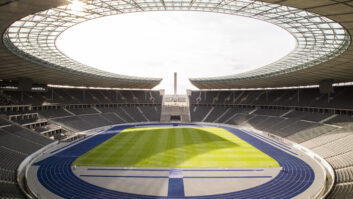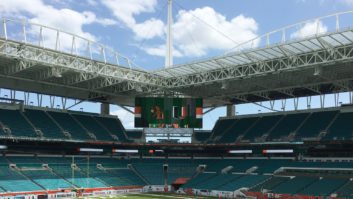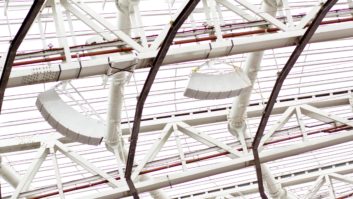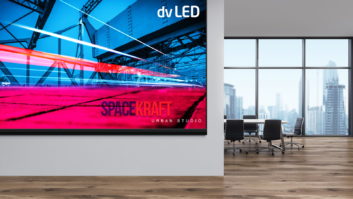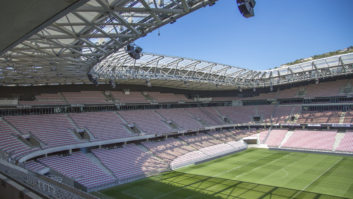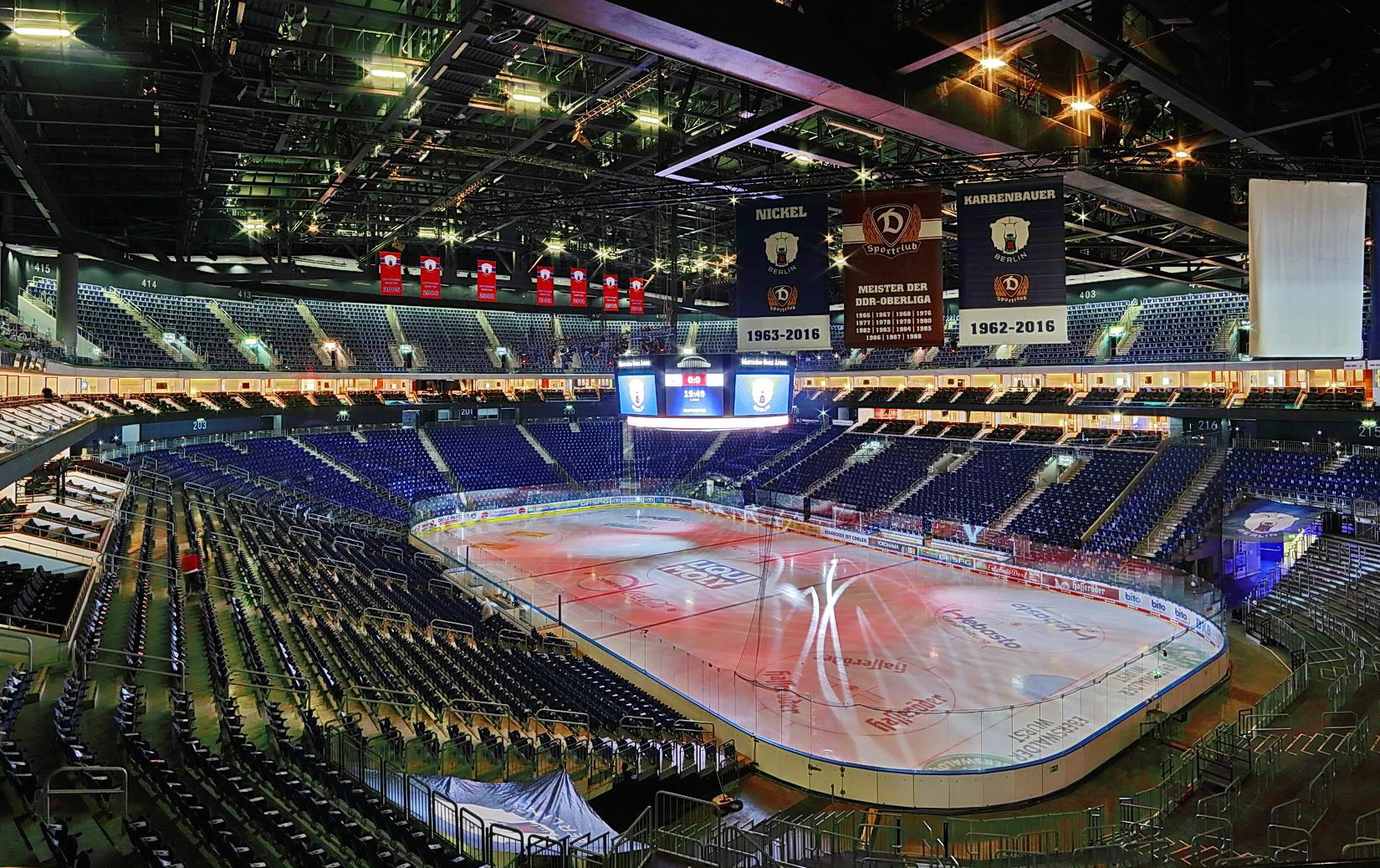
Where once attendance at a sports stadium involved a relatively straightforward process of interaction between visitor and venue – in essence: turn up and watch the event, buy a drink or two and maybe some food and merchandise, leave the premises – now there is talk of the all-encompassing ‘match-day experience’. In addition to experiencing the on-pitch action, there is likely to be the opportunity to enjoy replays and interview material in the highest possible quality on display screens; access additional content on mobile devices using the stadium’s (hopefully) robust Wi-Fi network; receive targeted messaging related to the stadium via text message; and – for those with deeper pockets – savour all the excitement from a VIP suite equipped with the very latest AV equipment.
Related technological expectations have led to the increasing use of the term ‘smart stadiums’, although as Pete Egart – vice president EMEA at video display, scoreboard and messaging technology specialist Daktronics – observes, the trend has actually been several decades in the making. “The expectations of the stadium experience have been growing every year for the last 20 years,” he says. “Stadiums not only compete with rival clubs to draw fans, they also compete with home entertainment systems. At home, fans have access to large-screen LCD or projection systems, access to high-speed internet to track game stats and interact with social media, and unlimited access to food and drink within a few steps from their screen. Stadiums also compete with other venues, such as local bars and eateries, where fans gather to support their team in a social environment.”
One primary result of this often intense level of competition is that stadium and arena venues have had “to escalate in both size and functionality to create experiences that cannot be replicated in any other environment. The rate of this escalation has been accelerating in recent years as venues try to bring the next ‘never been done before’ to the market. New innovations drive excitement for fans and aid in driving ticket sales and advertising revenue as brands want to be associated with the unique experiences that the venue provides on game day,” continues Egart.
In short, there is all to play for when it comes to the newest generation of sports stadiums – from the robust networking backbones on which many of the latest systems will reside, to the quality of the screens that greet visitors in the concourse areas of the stadium and, of course, those located at pitchside too. So, to what extent has this state-of-the-art vision now been deployed at sports stadiums across Europe, and what are the new technologies – such as VR and robotics – that are likely to determine the design of venues in the future?
Planning
But first things first – some definitions. By its very nature, a smart stadium is one that is not only able to cope with current demands, but also affords some capacity to accommodate possible future needs. It is therefore defined by Egart as “a stadium that has been well designed to integrate multiple technologies and provide the right content to the right people at the right time.” By extrapolation we might conclude that connectivity and display screens constitute the two most important single elements of the modern stadium’s infrastructure, particularly when sports are the main attraction.
“Venues, clubs and organisations are keen to improve the fan experience for everyone, and that means installations that do run to hundreds of endpoints and so on”
Mike Allan, CTO of IPTV and digital signage specialist Exterity, says that the cycle of upgrades in these areas began to intensify “about two or three years ago. It was at that point that you began to see real interest in gearing up and increasing the offer to fans. So you saw a lot of stadiums start to adopt new technologies, and not [only in terms of distribution of TV] over networks.” It is true that one of the major drivers is “higher-quality VIP suite displays, but you are also seeing the development of networks that cover very large deployments. Venues, clubs and organisations are keen to improve the fan experience for everyone, and that means installations that do run to hundreds of endpoints and so on.”
James Keen – group marketing manager of video steaming, IPTV and digital signage company Tripleplay – neatly summarises the expectations of video that a sports stadium would typically have in addition to feeding the primary pitch-side screens. “You will probably want to send live TV to the concourses as well as to the corporate boxes and suites. You may also wish to deliver promotional and advertising materials to concourses, retail outlets and reception areas,” he says.
In terms of the feeds there will likely be a requirement to accept both standard broadcast feeds as well as additional cameras provided by the venue itself. “For example,” says Keen, “many venues will have their own IP cameras in gantry and these will stream content that can then be distributed to selected TVs around the stadium.” So there is, potentially, a huge amount of content with which to work, and this calls for the implementation of a “centrally controlled content system” that enables personnel to effectively marshal all of the content sources.
While the merits of a centralised management system are easy to understand, there are plenty of methods by which the content may be distributed. In the case of Tripleplay, its solutions use self-contained LAN networks “so that nothing touches the ‘wider’ internet within the venue. One of the reasons for this is that if you have, say, 1,000 screens all showing an IPTV channel with a live stream from the game, then at an HD level that will take 5Mbps off the network speed. [Rather than] pushing out a match to every individual screen, we are able to do multicasts whereby each individual service can pick up the stream and therefore have a lower impact on the overall performance of the network.”
Maciek Janiszewski, application engineering manager of optical digital fibre-based network company Optocore, underlines the general sentiment that each stadium will have differing needs of its network infrastructure. But one shared requirement is likely to be “flexibility – that is their main concern – both in terms of the ability to have every channel everywhere in the stadium, but also simplicity of control and usage.” Janiszewski also highlights “the issue of the weather and how that will influence the system”, noting that there may be areas of the stadium where devices are exposed to high or low temperatures, so related precautions may need to be taken.
